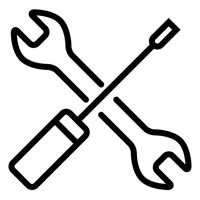Understanding the Role of Power Quality Analyzers in Diagnosing Electrical Network and Distribution System Issues
Author: James Osborne Date Posted:10 May 2025
Power quality is a critical factor in ensuring the safe, efficient, and reliable operation of electrical equipment and systems. Fluctuations or disturbances in power supply can lead to equipment malfunction, energy inefficiency, unplanned downtime, and costly repairs. This is where power quality analyzers (PQAs) become essential diagnostic tools in identifying, analyzing, and mitigating issues within electrical networks and distribution systems.
In this comprehensive guide, we explore the functions, benefits, and real-world applications of power quality analyzers and how they help electrical professionals maintain optimal system performance.
What is a Power Quality Analyzer?
.png)
A power quality analyzer is a precision instrument designed to measure, monitor, and record various parameters of electrical power systems. It provides detailed insights into the quality of electrical power by identifying anomalies such as:
- Voltage sags and swells
- Harmonics and interharmonics
- Transients and surges
- Flicker
- Frequency deviations
- Imbalance in three-phase systems
- Power factor inefficiencies
- Energy consumption patterns
These tools are used by electricians, engineers, facility managers, and utility companies to ensure electrical systems comply with standards such as IEC 61000-4-30, IEEE 519, and EN50160.
Why is Power Quality Important?
Maintaining high power quality is vital for:
- Ensuring equipment longevity
- Preventing production downtime
- Reducing maintenance costs
- Enhancing energy efficiency
- Complying with industry standards and regulations
Poor power quality can result in overheating, data loss, machine malfunction, or damage to sensitive equipment such as PLCs, VFDs, and servers. Identifying issues early helps avoid disruptions and significant financial loss.
How Power Quality Analyzers Identify Electrical Issues
.png)
1. Monitoring Voltage and Current Trends
PQAs continuously log voltage and current to detect irregularities such as:
- Voltage sags caused by high motor start-ups
- Swells during light load conditions
- Transients from lightning strikes or switching actions
These events can lead to unwanted tripping or failure of equipment.
2. Detecting Harmonic Distortion
Harmonics are caused by nonlinear loads such as LED lighting, variable frequency drives (VFDs), UPS systems, and computer power supplies. PQAs perform harmonic analysis (up to the 50th or higher order) to detect:
- Total Harmonic Distortion (THD)
- Individual harmonic components
- Resonance issues
- Compliance with IEEE 519
3. Identifying Power Factor Problems
Low power factor leads to higher utility bills and increased load on the electrical infrastructure. PQAs help pinpoint:
- Reactive power issues
- Capacitor bank malfunctions
- Opportunities for correction through power factor optimization
4. Spotting Imbalances in Three-Phase Systems
Unbalanced loads can result in:
- Overheating of transformers and motors
- Reduced system efficiency
- Increased neutral currents
PQAs provide phase-wise analysis to identify and correct load imbalances.
5. Logging Energy Usage and Load Profiles
By logging consumption data over time, PQAs:
- Track peak demand periods
- Detect inefficiencies in energy usage
- Support energy audits and load planning
- Facilitate compliance with ISO 50001 Energy Management Standards
Applications in Electrical Networks and Distribution Systems
a. Industrial Facilities
- Preventing motor burnout from undervoltage
- Ensuring stable supply to production lines
- Identifying power spikes that can damage machinery
b. Commercial Buildings
- Managing HVAC loads
- Ensuring lighting systems do not introduce harmonics
- Power factor correction for large office towers
c. Renewable Energy Systems
- Monitoring inverter outputs
- Analyzing harmonics from solar and wind systems
- Verifying grid compliance
d. Utilities and Substations
- Grid performance benchmarking
- Fault detection and classification
- Compliance with regulatory power delivery standards
Key Features to Look for in a Power Quality Analyzer

When selecting a PQA, consider:
- Class A compliance with IEC 61000-4-30
- Real-time monitoring and waveform capture
- Multiple current clamp support (Rogowski or CT)
- Internal memory with extended logging capability
- USB, Wi-Fi, or Ethernet connectivity
- User-friendly interface with PC software for reporting
Top recommended models include:
- AEMC 8345 Power Quality Analyzer – Class A device with high-resolution color display and 4 voltage/4 current channel inputs
- AEMC PEL 113 – Ideal for fast troubleshooting with automatic setup
- Tekon 570 – Suitable for detailed compliance testing and wave capturing
- AEMC 8333 – Widely used for industrial-grade power quality analysis
Interpreting and Reporting Power Quality Data
Modern PQAs come with advanced analytics software that generates detailed reports. These reports provide:
- Event timelines
- Graphs of voltage/current waveforms
- Harmonic spectrums
- Compliance summaries
Technicians can use these insights to:
- Troubleshoot faults
- Recommend corrective actions (e.g., installing filters, capacitors)
- Justify capital expenditures on power system upgrades
- Demonstrate compliance to regulators or clients
Benefits of Using Power Quality Analyzers
- Proactive Maintenance: Identify problems before they escalate
- Reduced Downtime: Prevent costly equipment failures
- Optimized Energy Usage: Lower operational costs
- Regulatory Compliance: Meet utility and safety standards
- Enhanced System Reliability: Improve customer satisfaction and productivity
Conclusion
Power quality analyzers are indispensable tools for any organization operating critical electrical systems. By providing in-depth insight into the performance and health of electrical networks, PQAs empower engineers and electricians to take timely corrective actions, improve system efficiency, and prevent costly disruptions.
Whether you're in manufacturing, commercial property management, renewable energy, or utility operations, investing in a quality power analyzer pays dividends in reliability, safety, and performance.
Contact Us for More Information
If you're looking to implement power quality monitoring solutions in your facility, contact Testrix Systems today. Our expert team can help you choose the right power quality analyzer tailored to your system’s needs and provide comprehensive support for setup, diagnostics, and reporting.
Browse our range of industry-leading PQAs now or request a consultation!




